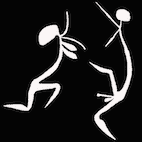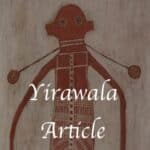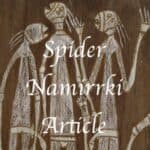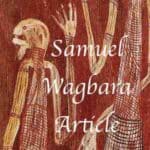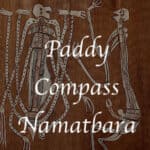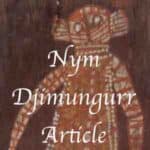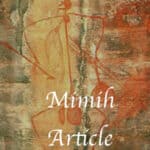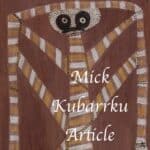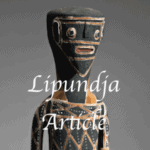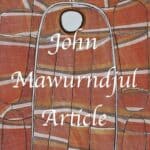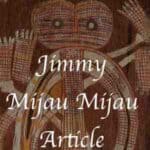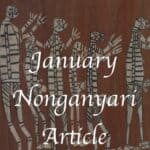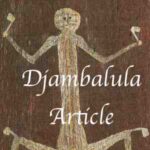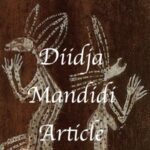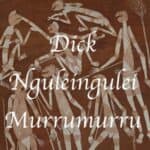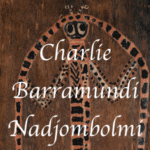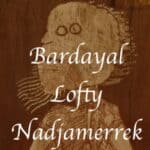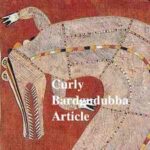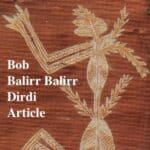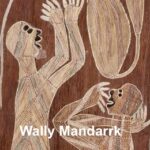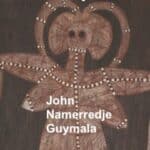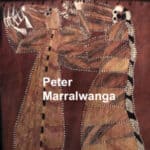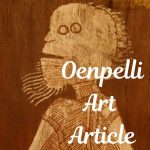Dick Murrumurru Rock Artist to Bark Artist
Rock Country Lineage in Bark
Born circa 1920 at Kukadjerri, Dick Murrumurru Nguelingueli spent his formative years immersed in the stone escarpments and rugged sandstone country at the headwaters of the Liverpool River in Western Arnhem Land. Deeply rooted in rock art traditions, his bark paintings are celebrated for preserving the ancient aesthetic and ceremonial integrity of these early cultural expressions.
Unlike other contemporaries who began to experiment with more stylized or Western-influenced forms, Murrumurru’s works remain steadfastly committed to the graphic conventions of rock painting. This fidelity—to technique, form, and spiritual content—marks him as one of the most culturally conservative and authentic artists associated with the Oenpelli region during the mid-20th century.
Throughout the 1960s and 1970s, Murrumurru was prolific. He painted consistently for art advisors and collectors based at Oenpelli (now Gunbalanya), and his works are now held in both public collections and private hands around the world. His figures are often outlined in white pipeclay, with delicate rarrk infill, and he frequently depicts ancestral beings and totemic animals with anatomical transparency—a hallmark of Arnhem Land spiritual realism.
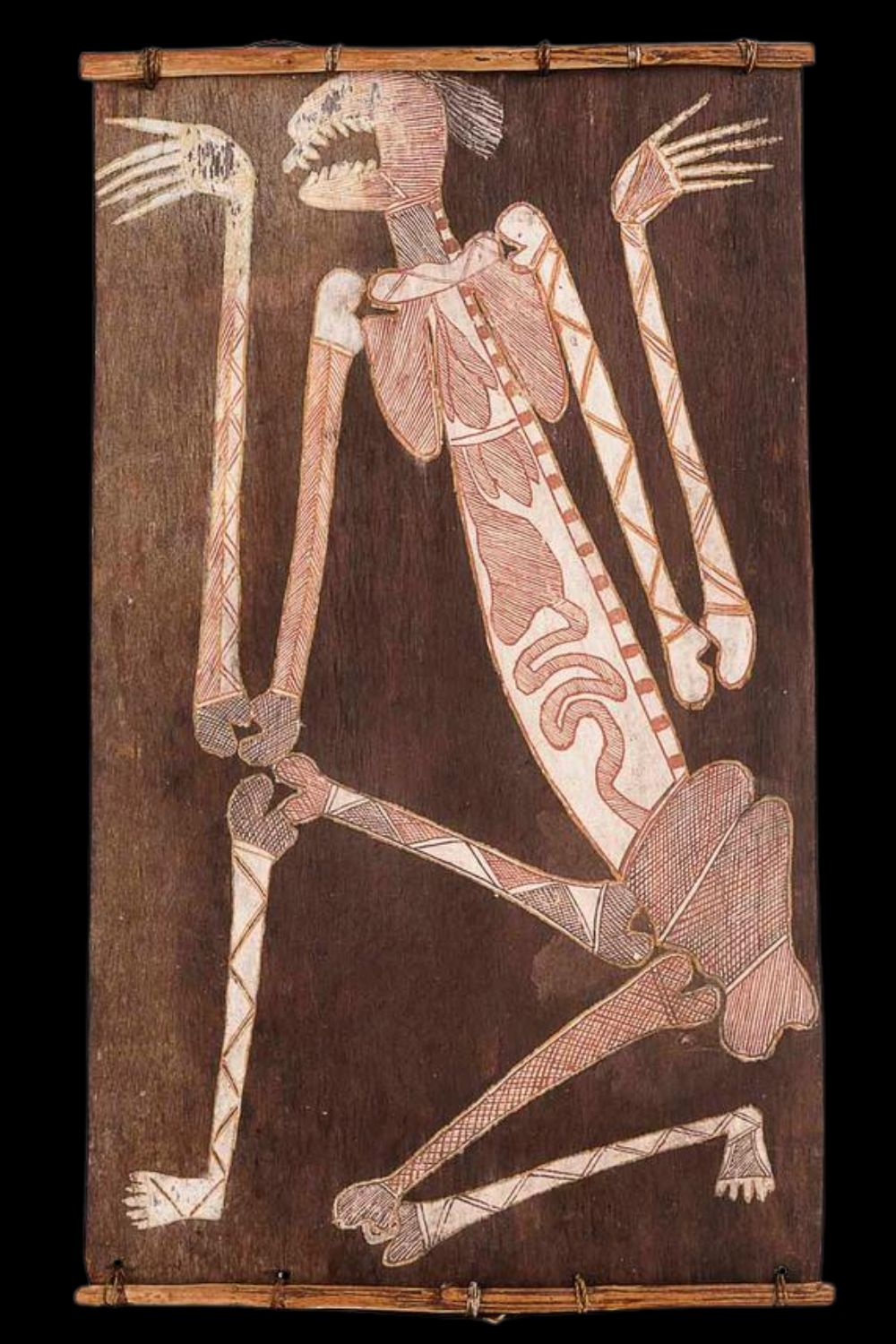
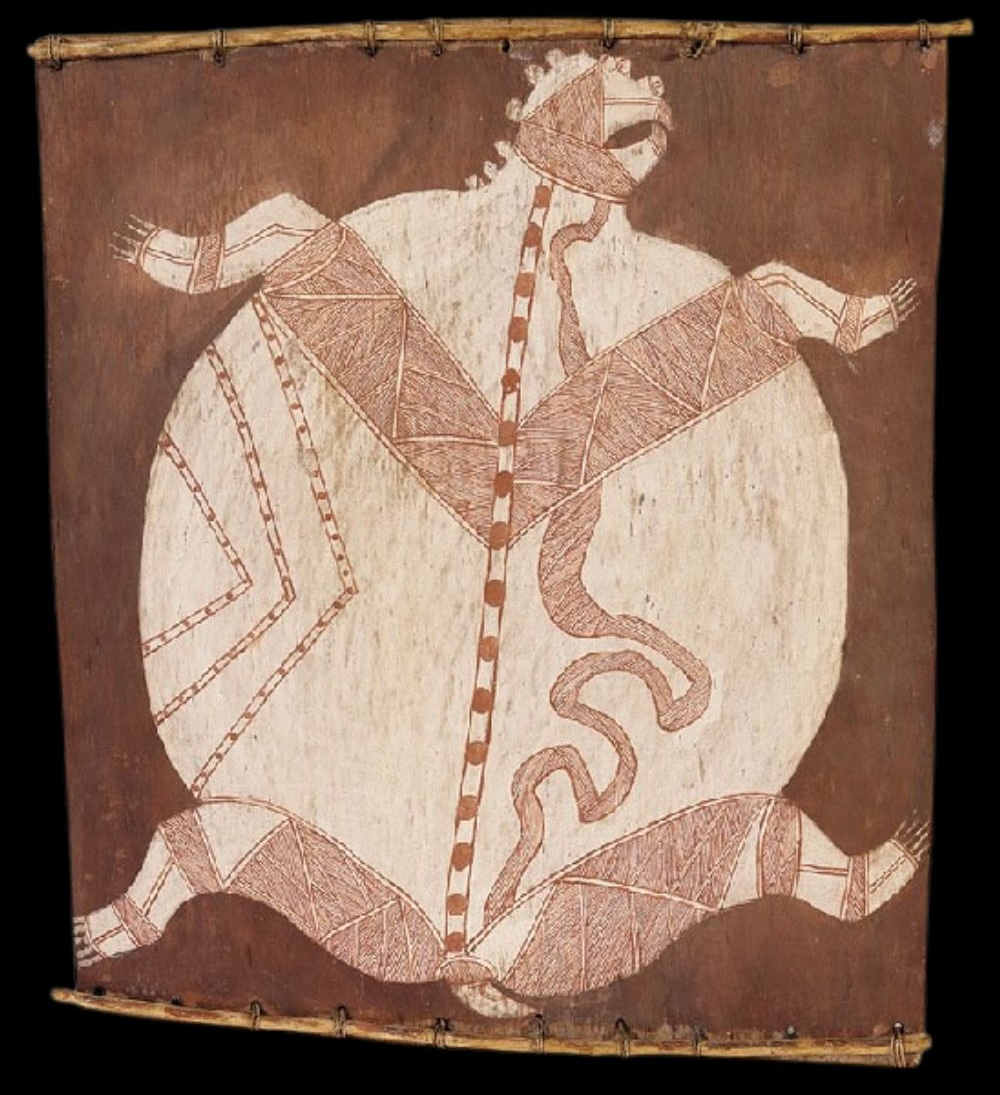
Selling or Valuing a Dick Murrumurru Painting
If you have a Dick Murrumurru bark painting to sell, I would be very interested in acquiring it. Please don’t hesitate to get in touch. Whether you’re looking to sell or simply want to know what your Dick Murrumurru painting is worth, feel free to send a JPEG image—I’d be glad to assess it and share what it would be worth to me as a collector and dealer.
Stylistic Hallmarks of Dick Murrumurru Nguelingueli
Master Draftsman of the Oenpelli X-ray Tradition
The early bark paintings of Dick Murrumurru exhibit an exceptional mastery of the Oenpelli school’s x-ray style, characterised by fine parallel rarrk and remarkable anatomical precision. His works are frequently compared to—and in some respects rival—the more widely known Lofty Nadjamerrek, particularly in the rendering of figures. Indeed, some of Murrumurru’s compositions possess a greater fluidity and anatomical grace than even Nadjamerrek’s, revealing the hand of a superb draftsman with an acute observational eye.
Murrumurru’s backgrounds are typically painted in a rich solid red ochre, a preferred ground that enhances the contrast of his white figurative forms, with accents in yellow, red, and black. He demonstrates an expert understanding of negative space, often allowing broad monochromatic fields to balance the intricate linear detail of his figures. In his earlier works, line work dominates—comprising tightly packed, intense parallel rarrk rather than traditional cross-hatching. These fine, rhythmic lines lend his compositions a sense of three-dimensionality and volume, an unusual and sophisticated effect in Arnhem Land bark painting.
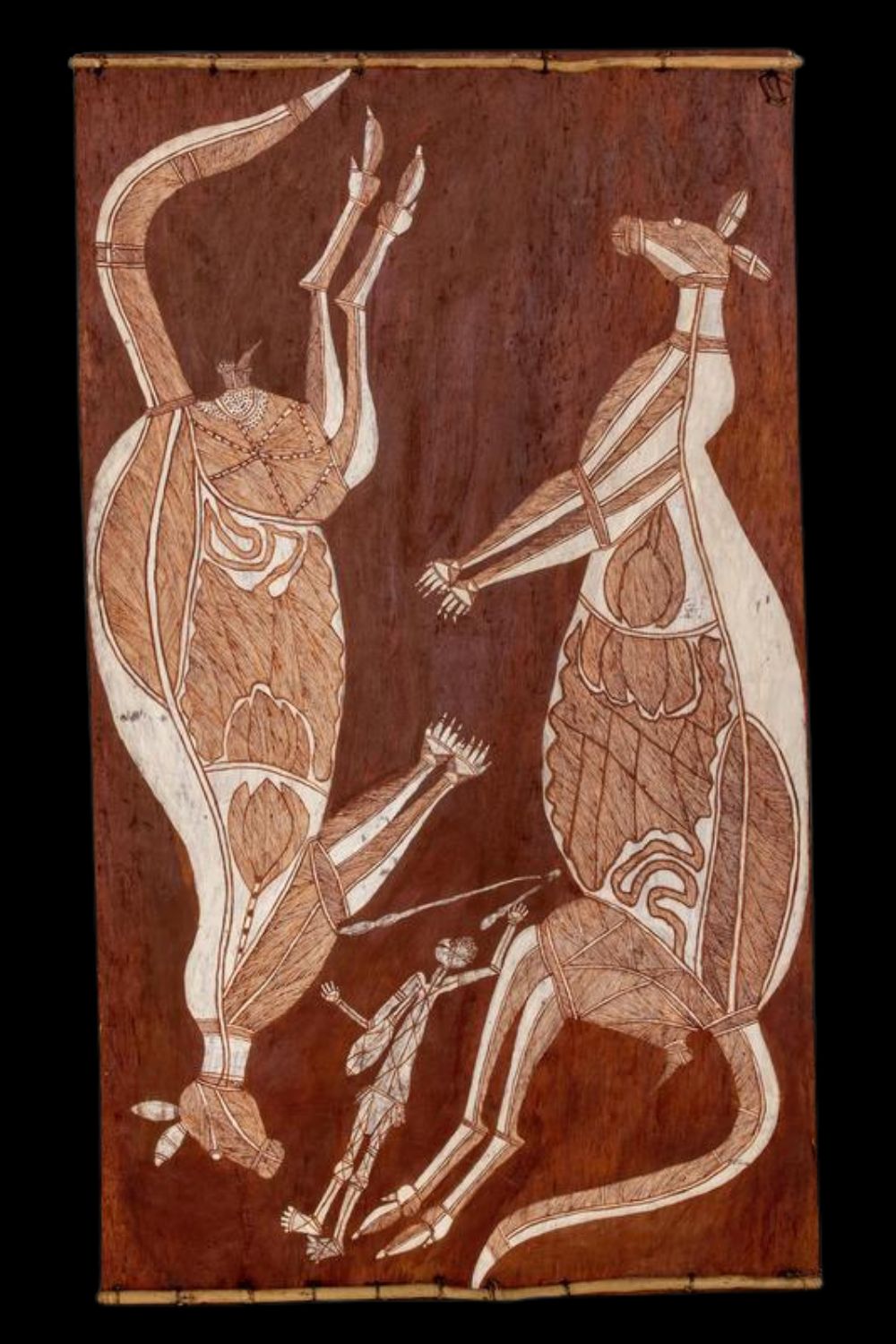
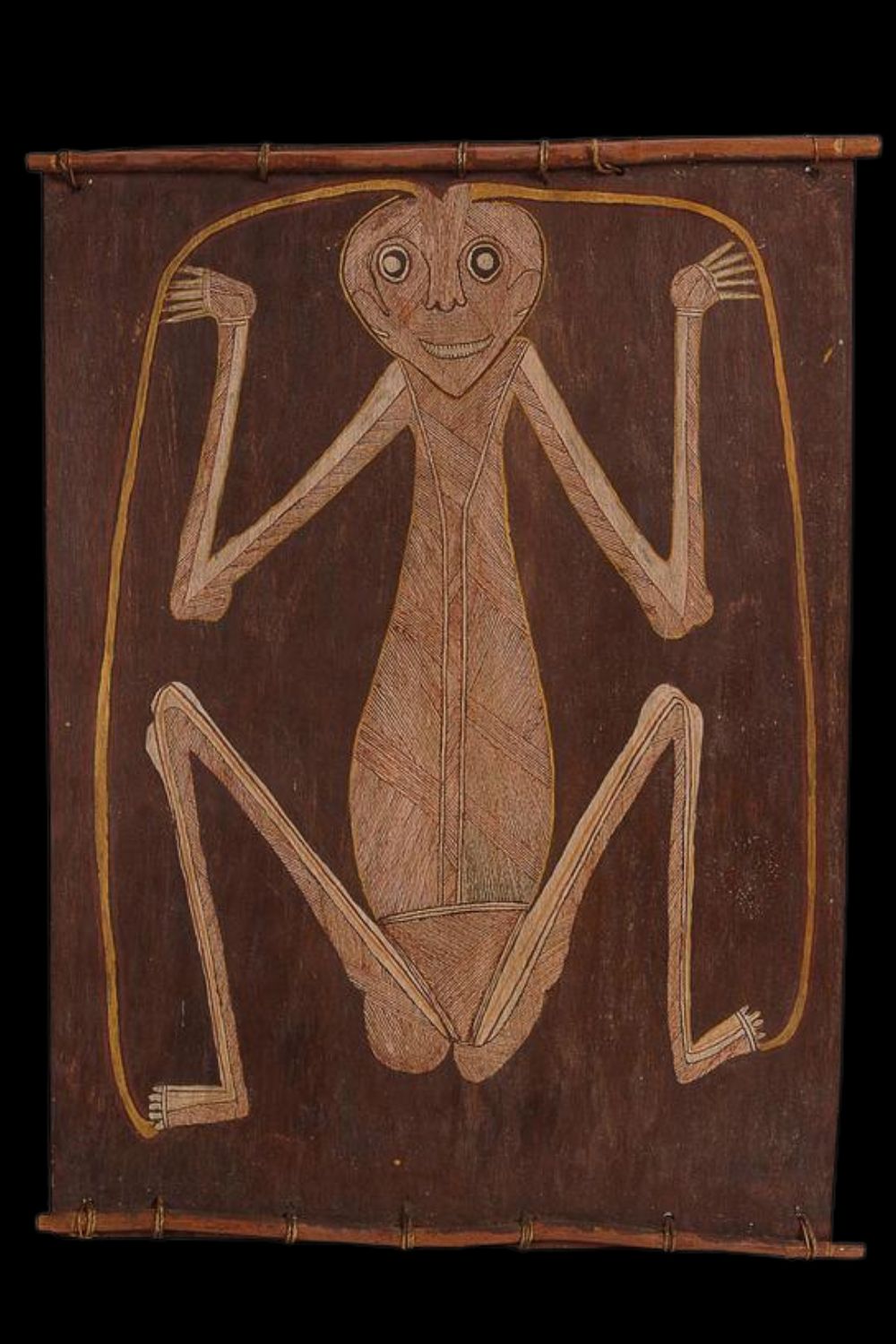
In later works, Murrumurru gradually introduced more cross-hatching, shifting slightly toward a denser visual texture while still preserving areas of unpainted calm. The evolution of his technique reflects a nuanced development rather than any loss of precision or intent.
A signature hallmark of Murrumurru’s style is the distinctive facial configuration of his anthropomorphic figures—featuring large open mouths and eyes placed unusually high on the head, often near the crown. This iconography is particularly striking in his depictions of ancestral spirits and figures like Namarrkon, the Lightning Spirit, whose formidable presence Murrumurru conveys with great energetic clarity.
Collectors and curators alike value Murrumurru’s work for its stylistic consistency, technical finesse, and ethnographic authenticity. His barks remain vital examples of the transition between rock art and ceremonial bark painting traditions in Western Arnhem Land.
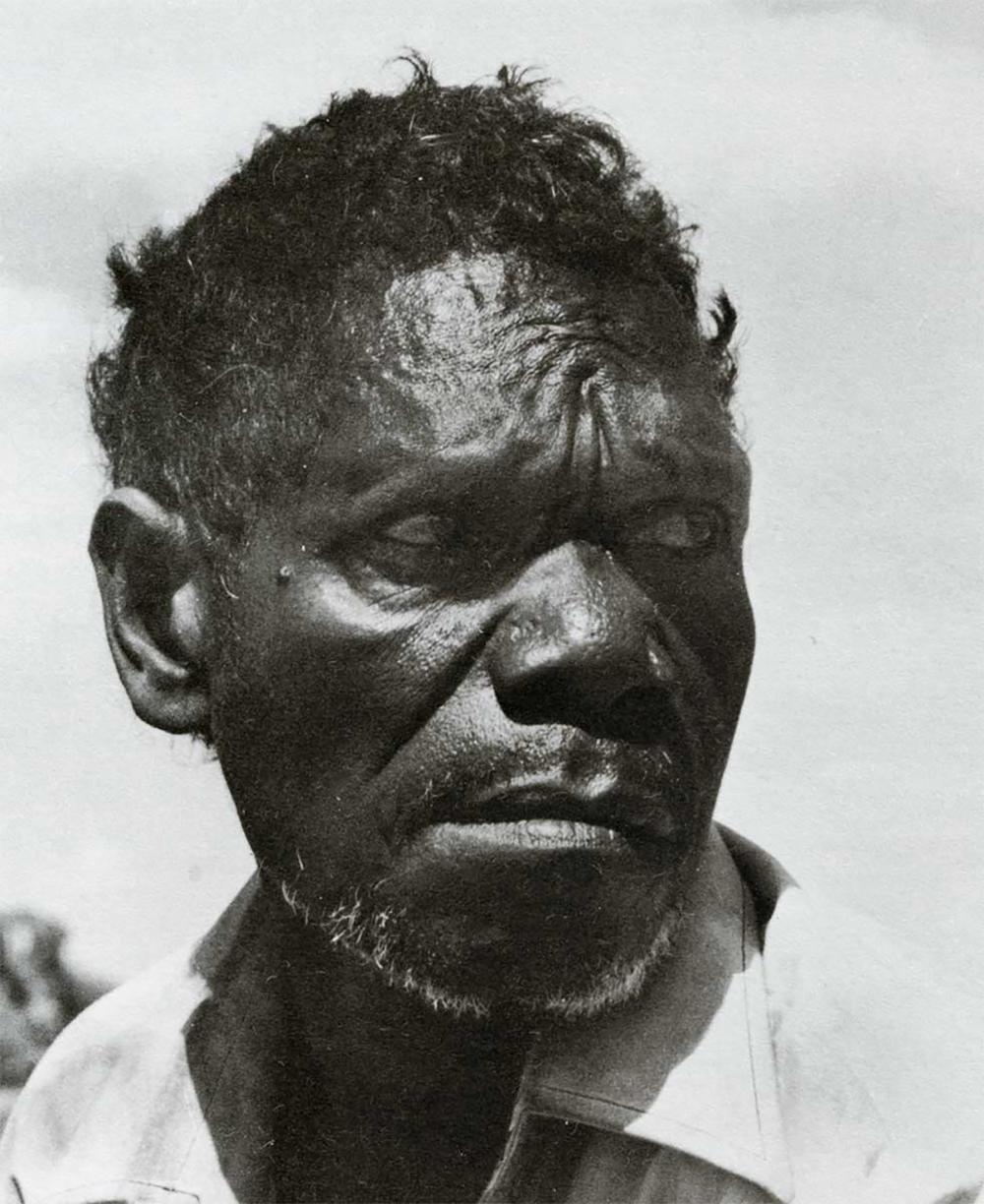
Later Life and Legacy
In his later years, Dick Murrumurru lived at Malgawo, in proximity to his ancestral Bularlhdja clan lands in Western Arnhem Land. He passed away in 1988, marking the loss of one of the region’s most technically gifted and stylistically consistent bark painters. While Murrumurru’s work continues to receive increasing recognition among curators and collectors, much of his life remains undocumented. If you have further information about Dick Murrumurru’s life, community, or artistic practice, please feel free to reach out—I would be honoured to include it in this ongoing tribute to his legacy.
Please note that his name may also appear in records or collections as Dick Murru Murru, Dick Murra Murra, or Dick Murramurra.
References and Extra Reading
Keepers of the secrets: Aboriginal art from Arnhemland
Crossing Country: The Alchemy of Western Arnhemland art
All images in this article are for educational purposes only.
This site may contain copyrighted material the use of which was not specified by the copyright owner.
Dick Murrumurru Artwork Values
My private database currently includes 79 documented bark paintings by Dick Murrumurru, with recorded values ranging from $200 AUD to $15,000 AUD.
The value of a Murrumurru bark painting can vary significantly depending on a number of factors. These include the subject matter, visual impact, size, and date of execution, as well as provenance and the work’s significance within the artist’s overall body of work. Especially prized are early examples featuring fine-line Oenpelli-style x-ray rarrk, depictions of ancestral beings.
If you own a bark painting by Dick Murrumurru and would like a valuation or are considering selling, I would be very pleased to hear from you. Please send a clear image of the work along with its dimensions, any labels or inscriptions, and any known provenance details.
Meaning of some Dick Murrumurru Artworks
Luma Luma – The Fallen Giant of Kunwinjku Lore
In the ancestral narratives of the Kunwinjku and Kuninjku peoples, Luma Luma is a figure both revered and feared. A giant of immense strength and supernatural power, Luma Luma wielded authority without restraint. Despite his stature as a creator being, his unchecked greed and transgressions against social law—especially his domination over women and food—would ultimately lead to his downfall.
While his wives gathered and prepared bush foods, Luma Luma would declare each item taboo, denying other people of there nourishment. Even more egregiously, in the absence of men, he took liberties with their wives. Though initial attempts at revenge failed—so great was his might—the clan united in a final act of justice. A trap was laid. Luma Luma was overwhelmed, pierced by a volley of spears and burnt.
In bark paintings by artists like Dick Murrumurru, this dramatic scene is vividly depicted: the once-mighty giant being slain with the spirit of another man’s wife in his belly—his body writhing with spears, his power extinguished by collective will.
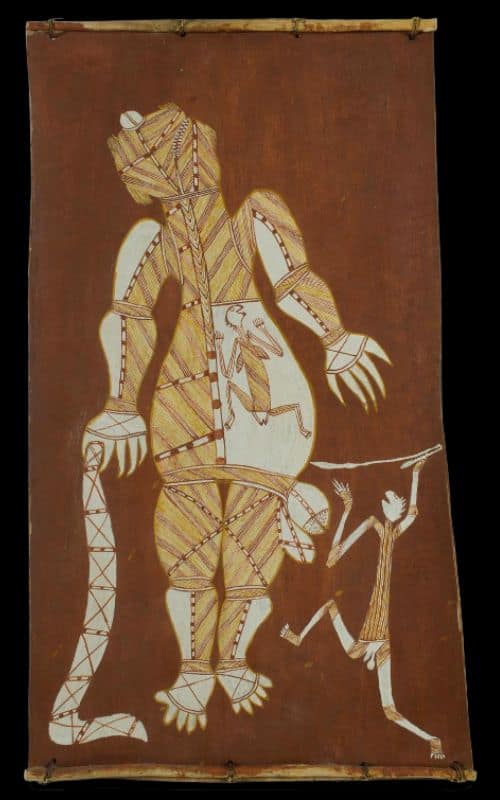
Luma Luma by Murrumurru painted with ochre on bark
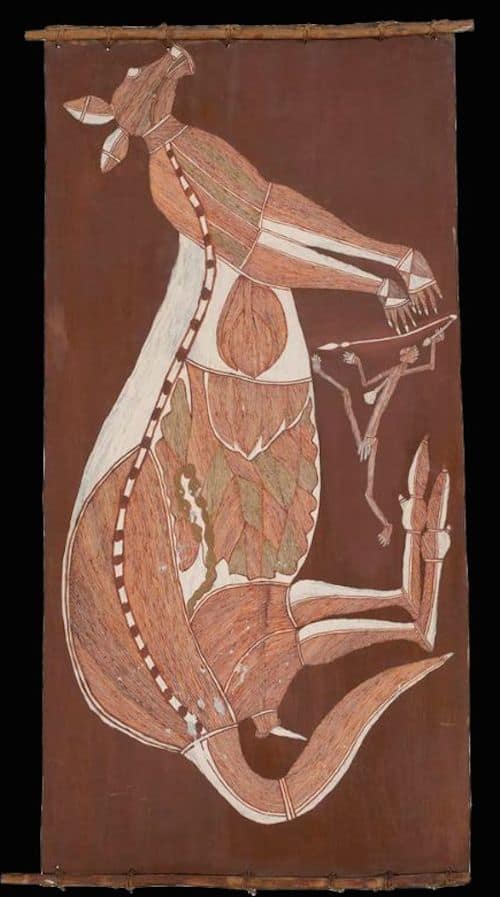
Mimih Hunter and Kangaroo by Murrumurru painted with ochre on bark
Mimih Dreaming
This powerful bark painting recounts an ancient Arnhem Land narrative: the encounter between a hunter, Djala, and a Mimih spirit named Kaman.
Djala and his heavily pregnant wife lived near the rugged escarpments—landforms whispered to be the hidden domain of the Mimih. These spirit beings, impossibly tall and slender, inhabit rock crevices and possess potent, often dangerous, magic.
One day, while tracking a large kangaroo, Djala found himself near dusk in unfamiliar territory. To his surprise, he witnessed a Mimih spear and kill the very animal he had been hunting. Rather than confront the spirit, Djala offered respectful praise for the Mimih’s skill. The spirit, Kaman, welcomed the compliment and extended an invitation to his secret camp to share in the kangaroo meat.
With hesitation—knowing the dangers of Mimih sorcery, particularly their power when possessing a man’s hair or semen—Djala accepted the invitation. At Kaman’s breath, a solid rock wall parted, revealing a hidden glade untouched by human eyes. Kangaroos grazed peacefully in the soft grass, while ahead, a sacred cave pulsed with music and movement. There, other Mimih danced and sang, and Mimih women—taller, fuller, with prominent breasts—tended to the fire.
Kaman insisted Djala remain the night. Though wary, Djala was lulled by the songs and the flickering firelight. He soon fell into an enchanted sleep. During the night, he felt the hands of Mimih women caressing his body—aware that full wakefulness might lead to seduction and spiritual captivity, he remained still, feigning slumber.
Before dawn, under the faint glow of the stars, Djala quietly slipped away—leaving the dreamlike world of the Mimih behind. He returned to his wife, forever changed by his brush with the spirit realm, yet untouched by its binding magic.
Ngarrbek the Echidna
In the sacred cosmology of the Kuninjku people of Western Arnhem Land, Ngarrbek, the Echidna, is far more than an animal—he is a powerful ancestral being who features prominently in the Yabbadurruwa ceremony, one of the region’s two great ceremonial traditions alongside the Kunabibbi.
These paired ceremonies are performed by different but interlinked social groups and represent reciprocal custodianship of the ancestral past. They function not only to honour ancestral creation events but also to sustain the seasonal cycles, ensuring fertility, abundance, and renewal—especially at the onset of the wet season, when life pulses anew across the floodplains.
A profound episode from Kuninjku ancestral lore recounts the battle between Ngarrbek and the spirit being Ngalmangiyi. The story begins with tragedy: Ngalmangiyi consumes a baby of the Kodjok subsection, belonging to Ngarrbek. This loss sets in motion a confrontation charged with symbolic weight.
Armed with a grindstone, Ngarrbek faces Ngalmangiyi, who is armed with many spears. During their fierce battle, Ngalmangiyi hurls spear after spear into Ngarrbek’s body. These spears are said to have later transformed into the echidna’s spines—a powerful metaphor for the way ancestral actions have left their mark on the natural world.
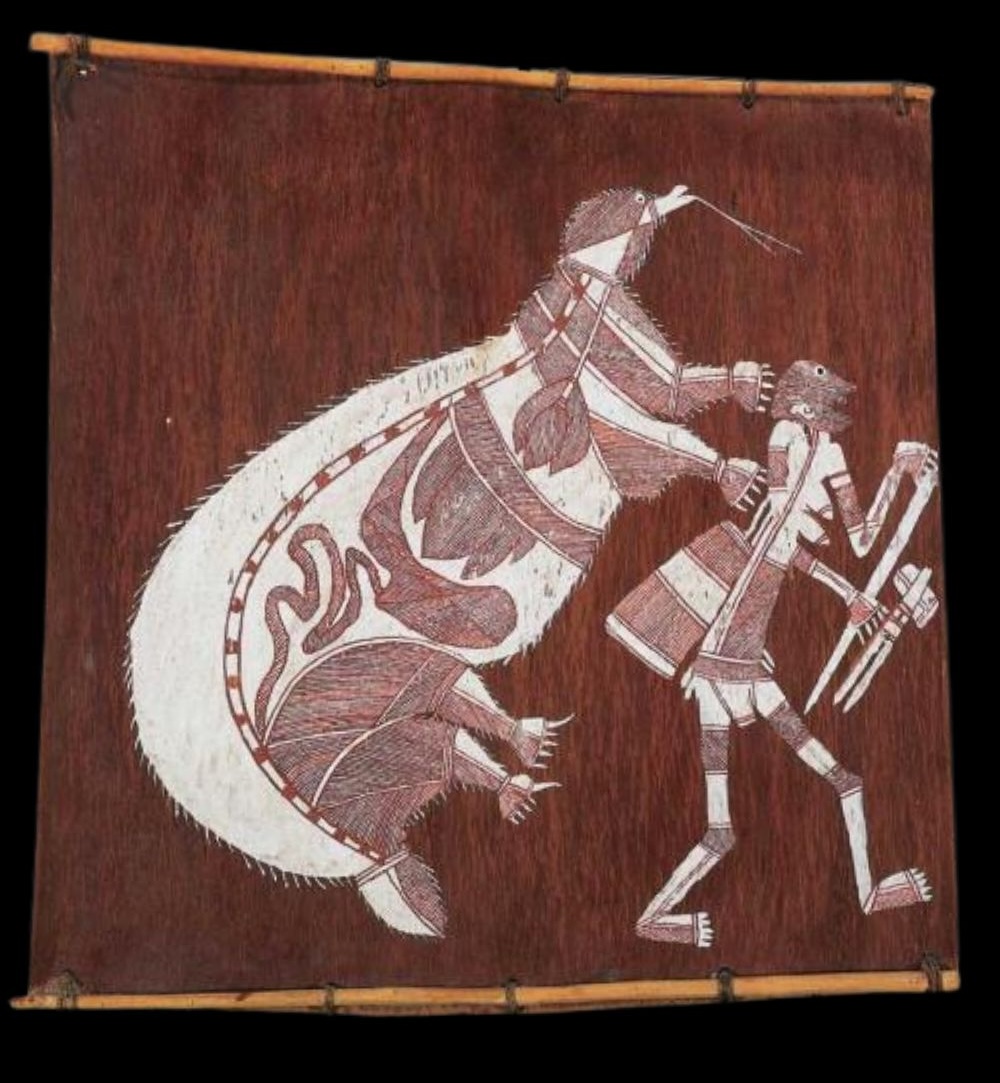
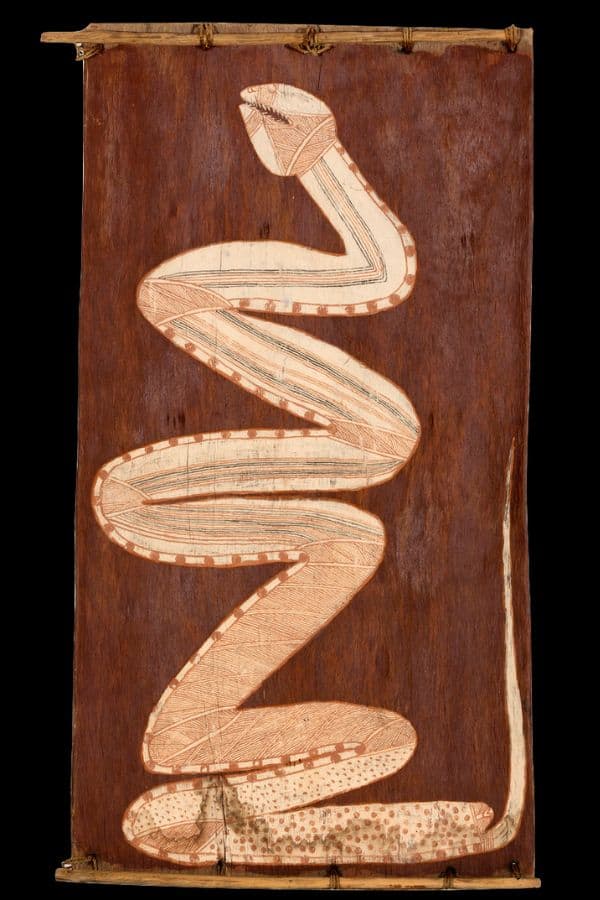
The Rainbow Serpent — Jingana, Mother of Transformation
In the spiritual cosmology of Western Arnhem Land, the Rainbow Serpent is among the most powerful and revered ancestral beings. Not one, but three Rainbow Serpents are known to traverse this mythic landscape, the most formidable of which is Jingana—the Mother Serpent.
Jingana resides in subterranean springs and lily-covered billabongs, her presence hidden yet potent. In the mythic Dreaming, it is said that Jingana surveyed the primordial world and found its creatures malformed—part human, part animal, bird, or fish. Dissatisfied, she swallowed every being, digesting their chaos and releasing them anew, reshaped in the proper forms that define today’s living species. Thus, she is not only a mother but also a cosmic sculptor, imposing order onto primordial disorder.
During the dry season, Jingana and her serpentine kin lie coiled in their secret pools. But as the monsoonal build-upbegins, they rise with the heat and moisture, riding the storm clouds they conjure from the vapours of their breath. Their growls become thunder, their tongues flick as lightning, and when their forked tongues strike the pregnant clouds, the deluge begins—unleashing the life-giving rains that renew the land.
